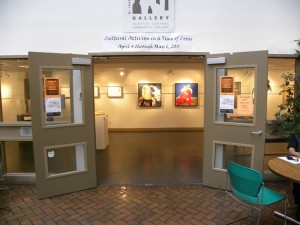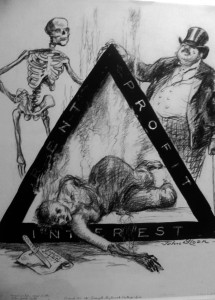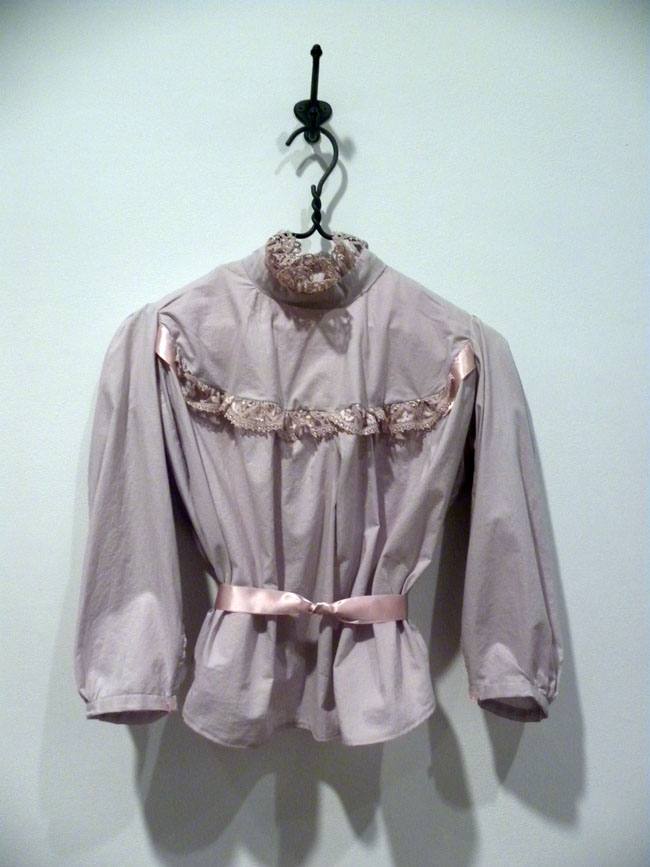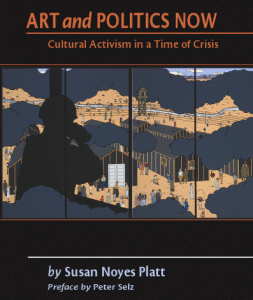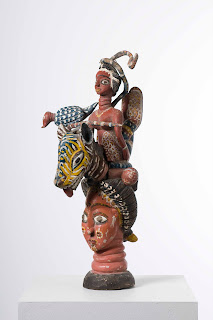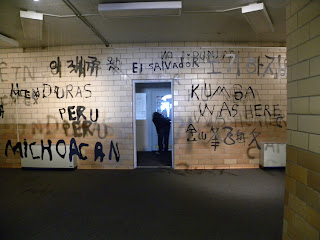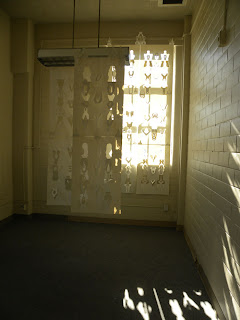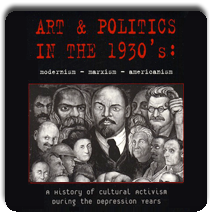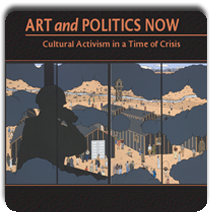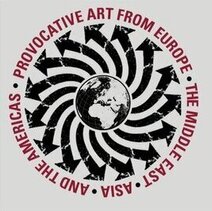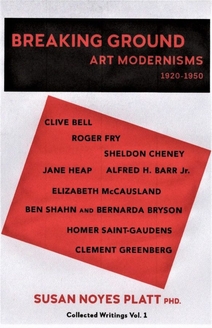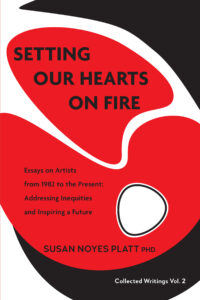Cultural Activism in a Time of Crisis, the exhibition
It is a time to return to blogging after the excitement of the book publication and the art exhibition. What better way than to analyze why the show “Cultural Activism in a Time of Crisis” is so exciting. As I have been giving people tours, I realized that all of these artists, whom I have been thinking about and writing about for several years for the book, are both deeply committed to social expressions and deeply committed to making strong art. Although I chose them to be in the book for that reason ( as well as the other 80 artists), seeing their work together in a fairly compact gallery space, where they speak loudly and clearly, each in a different medium and often on a different subject, underscores the power of their work. and the power of truly engaged artists to intervene in political discourses with new perspectives and new insights. In this time of perpetual visual imagery, visual artists are more important than ever to select and make more intense the subjects which we are all concerned about.
The installation, brilliantly resolved by Ken Matsudaira, the Director of the M. Rosetta Hunter Gallery at Seattle Central Community College, was very difficult because of the wide ranging aesthetics and topics, materials, and scale. We had glass, drawing, print making, paper, ceramic, painting, fabric, multi media installation and video. All of the work is on my website under www.artandpoliticsnow.com/exhibition. There are also installation shots on the website and a few pictures of the opening, and links to artists websites.
The topics addressed are maquiladora factories and their victimized workers, (Celia Munoz) the unremembered Chinese railroad workers ( Zhi Lin), Abu Ghraib (Daniel Heyman, Selma Waldman, Deborah Lawrence), La Malinche with a new feminist perspectives (Cecilia Alvarez), civilian casualities in war (Gail Tremblay), appealing to peacemakers to prevent war ( Ellen Sollod), Chinese immigration (Flo Wong), Argentinian disappearances (Claudia Bernardi), racism (Marita Dingus), the oppressions of the separation wall between Palestine and Israel, (Larissa Sansour), the oppressions of colonialism ( Maki Tamura) , the connection of past and present oppressions of native Americans in Alaska ( Tanis S’eiltin), the position of women in the midst of capitalist war(Deborah Lawrence), South African violence (Kim Berman), and the pertinence of ancient Indian spirituality to our contemporary world (Lillian Pitt).
It is a big range, and each one includes unusual conceptualizations, rare insights, and new perspectives. This is political art at its best. It completely refutes the tired dismissals of shallow thinkers who seem to think that art that engages issues is somehow second to art that is personal or is simply an assemblage of materials for their own sake. In fact those expressions are also political, in that the artists are choosing to deny that they live in a world with issues that are larger than they are, that affect them every day, that are part of who they are, even though they don’t know it. The artists in “Cultural Activism in a Time of Crisis” know these facts, they embrace not only who they are, but their place on the planet. That is the crucial act that all artists must follow today
At a recent “Conversation” sponsored by John Boylan, Seattle art critic, one participant, a young graduate student at the University of Washington, declared “there is no poetry in politics.” A young man who was attending and had just come from Wisconsin, said “Tell that to the people in Wisconsin.” In Wisconsin nobody is deluded into thinking that staring at their bellybutton is a way to stop the horrendous legislation that is being bullied through the state government. Being oblivious to the world means allowing the world to control you, more so every day. Exposure of wrongs and making visible those wrongs is what artists can do. The best ones are doing that.
When I went to Olympia to protest the budget cuts being perpetrated on the poorest, youngest, and sickest people of our state, at the expense of huge tax breaks for the wealthy, I saw some signs, some images, some log0s that were strong ( unfortunately I didn’t have a camera). The collective energy of 6000 union workers coming together was huge. But the most powerful moment for me was listening to the deep throbbing of a group of Indian drummers. The use of art heightened the event immeasurably and connected the past and the future.
Indians in the Northwest are more and more frequently appearing at political events or just outdoor events, drumming, and reminding us of our spiritual roots, and the importance of fighting for the survival of the planet every day in some way that we can.
This entry was posted on April 25, 2011 and is filed under Uncategorized.
Nick Cave hits Seattle
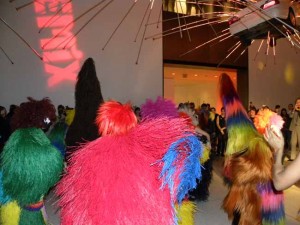 The Nick Cave show at the Seattle Art Museum fills the entire set of galleries that were devoted to Picasso, lots and lots of space. His costumes made from recycled materials seem like creatures that are both playful and threatening. They are meant to be worn and we see what a difference it makes when they are in both the video in the gallery and in the performances staged last week.
The Nick Cave show at the Seattle Art Museum fills the entire set of galleries that were devoted to Picasso, lots and lots of space. His costumes made from recycled materials seem like creatures that are both playful and threatening. They are meant to be worn and we see what a difference it makes when they are in both the video in the gallery and in the performances staged last week.
The costumes worn by dancers were multicolored and hairy, so they swooped in and out like a live abstract painting. They seem playful and friendly. There was one taller brownish colored costume that one inevitably read as male for no good reason that became a type of playful bear like partner to the purple, yellow, green and shocking pink colors.
These costumes are a long way from where Nick Cave began.
I missed the press preview and all the lectures, so I refer you to Jen Graves for more information.
Here I will simply mention that the earliest costumes are made of sticks. There is a recreated one in the exhibition. The idea of the costume is to eliminate gender, race, age, all the markers of identity that can lead to prejudice. The wearer becomes an abstracted being. But a costume can also be threatening, as in the case of the Ku Klux Klan, which seems to be a lateral reference.
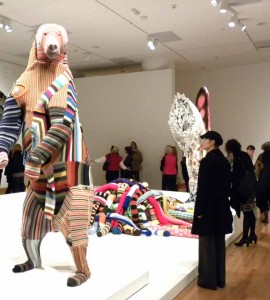 Here you see the entrance to the exhibition with this enormous bear. He looms over us, but he is not scarey. One little girl declared “But there isn’t any zipper” !
Here you see the entrance to the exhibition with this enormous bear. He looms over us, but he is not scarey. One little girl declared “But there isn’t any zipper” !
But the artist is a dancer and a costume designer of extraordinary talent. We see him dancing in one video, trying to escape an entangling vine like enclosure. He fails, although he tries over and over. In another dance shown on video, with one of the stick costumes, or related to that, brown, with appendages, the figure is like a threatening apparition. It becomes the manifestation of our fears of dark creatures, and by extension our fears of African Americans. But the creature as it leaps and crouches seems to possess a power that goes beyond the real, a power that is shaman like, recalling the costumes of native healers or African so called “witch” doctors.
So wearing these stick like costumes, no heads show, they are only shapes that evoke both magic, power, and fear.
But the costumes on display here are joyful, funny, noisy, colorful. They have a spirit of celebration. And then there are the costumes used in the performance.
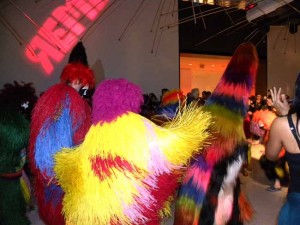 I saw it at Remix, Seattle Art Museum’s celebration. The whole museum was alive with music, people making art with Romson Bustillo, people dancing, looking at art. Those famous cars with by Cai Guo Qiang with their leds of light shooting out, become part of the party scene ( in another context, I have spoken of those cars, also as an odd set of mixed references on this blog, are they exploding ? or are they simply fun? it depends on our mood).
I saw it at Remix, Seattle Art Museum’s celebration. The whole museum was alive with music, people making art with Romson Bustillo, people dancing, looking at art. Those famous cars with by Cai Guo Qiang with their leds of light shooting out, become part of the party scene ( in another context, I have spoken of those cars, also as an odd set of mixed references on this blog, are they exploding ? or are they simply fun? it depends on our mood).
So the spirit of the figures was amplified by New Orleans style jazz music, the sense of celebration. There was no sense of threat really, except that slight sense of the unusual that might set people off outside the art museum. Apparently, there are spontaneous performances planned for the streets as well, and that will be fun of course.
So has Nick Cave given up his idea of genderless, classless, etc. No, but now it is just fun, there is no sense of a deep political statement about racism in our society ( apparently he made the first costume at the time of the Rodney King incident). Of course, I, for one, always resist the just for fun. I am always wanting artists to change the way people think, because there is still so much prejudice going on, and it is only getting worse and worse. The entire union busting endeavor is an attack on women and minorities who are the majority in the public unions that are being targetted.
But we will give time for a party, and it is wonderful to have an African American artist featured so prominently at the museum (the Jacob Lawrence Galleries, intended to be for African American artists seem to be lagging a bit in terms of that commitment, but there is, finally, another major show there coming up soon.)
This entry was posted on March 15, 2011 and is filed under Uncategorized.
Triangle Shirtwaist Factory Fire: An Exhibition
This entry was posted on February 18, 2011 and is filed under Uncategorized.
Art and Politics Now Cultural Activism in a Time of Crisis is PUBLISHED
This was the big week. Seventy people at the launch at Elliott Bay Books in Seattle. The book is now available from Midmarch Arts Press, 300 Riverside Drive, New York City. 1 212 865 5509. Please buy from my loyal independent publisher!! It is not on Amazon!!
This entry was posted on January 26, 2011 and is filed under Art and Politics Now, Midmarch Arts Press.
Art and Politics Now is published!
This entry was posted on and is filed under Uncategorized.
Contemporary Native Artists
Lara Evans, art historian and artist, as well as Evergreen State College professor, has published with other authors a new book called Art in Our Lives, Native Women Artists in Dialog. She has also curated a wonderful art exhibition It’s Complicated – Art About Home.
The two together give us new perspectives on contemporary native art. It is really exciting to have voices of a new generation. In the book, there are actually several generations, but the discussion is based on a novel format, a seminar among the artists.
The essays are overviews of various themes, Art as Healing, Art as Struggle by Gloria J. Emerson, Gender Women and Art Making by Sherry Farrell Racette, Space Memory, Landscape Women in Native Art History by Elysia Poon, and Crossing the Boundaries of Home and Art. by Lara Evans. The dialogue among these artist and others as the basis for the book. It is both personal and historical, spanning generations, and practices.
It is a wonderful addition to writing on Contemporary Native American Women Artists. The essay by Sherry Farrell Racette was particularly provocative in its references to the history of tribal gender roles. I was a little surprised though that unmentioned was what I understood as a fact ( perhaps it is not) that settlers declared they had to deal with a male chief in negotiations with tribes that had been matriarchal, and that caused a major shift in the gender power relations in many tribes. Also, in the Northeast, it was the rights of Native women that inspired the suffragette movement to demand more rights for white women.
But certainly, gender roles vary from tribe to tribe and era to era. Also the value associated to various activities have been arbitrarily assigned perhaps by outsiders. Why is it necessarily less significant to cure and cook fish than to catch them? Why is bead work or basketry less significant than sand painting?
The fact is clearly stated that for these women, they had to move outside expectations and norms in order to be artists. And it is evident that their work is incredibly varied, intriguing, and complex, based on the magnificent color illustrations in the book (according to American Indian magazine, the pubication of the National Museum of the American Indian, the museum provided significant funding).
The work at the top of the post is from the art exhibition. It is by Maria Hupfield, Flap Flap Flap 2004 plaster and paper mache. Hupfield is addressing ecological crisis with her dead birds, but their are so beautifully laid out on the floor of the gallery that it is possible to almost forget the actual subject. That edge of aesthetics and politics is crucial to this entire exhibition.
The artists are addressing intersections of native world views and mainstream. For example in one piece by Merritt Johnson, the animals are patching the Sky Dome, They are giving up their lives in order to keep the world going, A bear stands on top of a ladder offering his skin. We on the other hand just go on with our same bad habits. In another work by Johnson, an injured Turkey is protecting the sky. In a third she makes a reference to the BP oil spill
One of the themes of the art exhibition and the book is the changing relationship to the land for contemporary Native artists. But in spite of that the urban/reservation split is not absolute in any of these artists. They all move back and forth, between different realities, as does their art. That is the reason for the title of the exhibition “It’s complicated, Art About Home.
Perhaps the most compelling work in the exhibiton was by Kimowan Metchewais.
Goodwill 118 Edmonton, it is an innocuous image of the place where people drop off furniture for Good Will, but as Lara explained it, many native peoeple furnish their homes from this drop off. In addtion, this detailed and extraordinarly beautiful painting was done by an artist who lost the use of one whole side of his body.There are other works, videos, youtubes of Phoenix Arizona ( other peoples’ idea of home), a creation myth, a stunning pair of photographs by Sarah Sense.with an overlay of woven photographic imagery based on traditional weaving from the Chitimacha tribe who have a long tradition of basketry.
There are podcasts about the exhibition at this site.
Each of these artists both in the book and in the exhibition was previously unknown to me. How enriching to have this opportunity to expand my knowledge. Be sure to buy the book!
This entry was posted on January 11, 2011 and is filed under Its Complicated Art about Home, Lara Evans.
Alison Saar
 |
| Blood Sweat and Tears, 2005 wood, copper, bronze, paint and tar |
 |
| Lunarseas: Sea of Serenity, 2007 copper, tin and wood |
 |
| York:Terra Incognita, 2010 cast bronze |
This is the work of Alison Saar in the exhibition Bound for Glory at Lewis and Clark College in Portland. The main commission was to create a statue of York, the African American slave that accompanied William Clark on the Lewis and Clark expedition. Saar’s sculpture is a permanent installation on the campus. Here is the main work and the back. Little is known about York. So the artist had to piece together ideas, but we know that a dry stream was named for him. His back as a map of scars with the dry stream marked is full of poignency. York is set in the midst of a group of granite rocks, each with a bronze tablet that inscribes the few words in the Expedition journals that refer to him.
York faithfully served Captain Clark, but he was not rewarded with his freedom. Clark was arrogant and selfish. In the statue York is holding a rifle, which he used to catch game during the expedition, but when they got home it was taken away from him.
This tragic story of inequality and abuse of priviledge is given dignity by Saar’s sculpture.
The work in the exhibition was extraordinay. An excellent catalog with an essay by Linda Tesner (doesn’t seem to be available to buy, they gave it out free at the gallery and would probably send you one if you asked) provides helpful insights into the art works, but these works are so strong and poignent that we cannot help but be overwhelmed by Saar’s work. I think she is acheiving a whole new level of intensity in these sculptures.
There was one odd comment made by Tesner with reference to Travelin’Light, a bronze life size man in a suit hanging upside down. To me he was obviously being lynched, but Tesner said, he was “a little down on his luck.” I read this three times to see if I had missed something!
But the rest of the book was very insightful. Lunarseas, Sea of Serenity (above) is “speaks to introspection about how things come to mind in a quiet way, but also suggest thjat within the removed quietude of serenity one might verge on insanity …” Blood/Sweat/Tears at the top of the blog is self explanatory. There were many other really strong works as well.
This entry was posted on December 16, 2010 and is filed under Aiison Saar, Lewis and Clark College, Linda Tesner.
Imaging Others Cultural Intersections in the Colonial Period
Look at this wonderful image! It is a detail of a print by the Japanese artist, Yoshitora in 1860 looking at an American couple who are visiting Japan, probably in order to trade. The artist is carefully depicting their clothes. He has done a wonderful job of observing details and added his own subtle touch, like the woman in the foreground pointing, a very un Japanese gesture.
This is part of a a group of ukioy-e prints, called Yokohama-e because they are all based on observation of foreigners in Yokohama by Japanese artists. The work is from the collection of Professor Lenore Metrick-Chen, art history professor at Drake University. It is part of a fascinating exhibition that she has organized with Dr. John Monroe, a history professor at Iowa State University.
“Imaging Others, Cultural Intersections in the Colonial Period” is at the Anderson Gallery, Drake University,
It includes art work from Africa, China, and Japan, as well as photographs made in the U.S. in the late nineteenth century of “others”.
The very first piece in the gallery was an African sculpture of a person with a painted white face and anglo features. It set the tone for the surprises of the exhibition, that criss cross cultural influences to the point where all clear distinctions of gender, place, style, and power, are called into question as we look at the work.
Some of the images are familiar subjects, like Chinese railroad workers in America, and the Columbian Exposition of 1892. But then we see two men who were posing in an African display relaxing as they are not being African symbols, but just taking a break and relaxing, and of course they are just regular people.
The works span from 19c to the present. Two of my favorites were the carvings of African Missionaries, who were incredible stiff and straight looking, not a sensuous curve to be seen anywhere.
It is a stark contrast to this figure of Mami Wata, a fabulous carving based on a religion of the late nineteenth century in the collection of John Monroe, history professor at Iowa State University. The image started from a German lithograph of a circus snake charmer and was transformed into a powerful religious figure in Nigeria who went in for exotic foreign accouterments.Mami Wata worship has spread all over Africa and the African diaspora..
In the US we always look out, and assume we are the dominating culture of the world, that what we have to offer is superior and desirable to everyone else. . But in fact what we send out is alien, perhaps unwanted, and corrosive. But the cultures that we visit ourselves on send back our intrusions through cultural acts that transform our ideas with irony, humor, and a sense of our foibles that we ourselves do not recognize..
This exhibition is entirely refreshing, and its catalog, written in collaboration with students’ questions about colonialism, is a great format: .
Near the end, Dr. John Monroe comments :
“If we just reject racist images from the past without trying to work out what social, imaginative or cultural functions they were supposed to serve – which involves placing them in a broader context- we end up with less of an understanding of how and why racism emerges. It’s never something that pops up in isolation: it always exists as part of a complicated web of attitudes and assumptions that need to be untangled. That of course goes for the present as well as the past.”
This entry was posted on December 9, 2010 and is filed under "Imaging Others" Yokohama e, colonial images, John Monroe, Lenore Metrick-Chen.
Amazing Birds
This is a trumpeter swan flying. They make an amazing sound, which is why they are called trumpeters. The white spots on the ground are more swans.They do an intricate social ritual arching their necks that was fascinating. We saw hundreds of them in the Skagit Valley. As well as hundreds of snow geese and thirty other birds including Kingfisher, Blue Heron, Bald Eagles, Red Tail Hawks, Bohemian Wax Wing – but now I am getting technical. I know nothing about birds. I was with two experts who identified what I called little brown birds. But I was good on the big white birds!
And the thrill of seeing so many birds is wonderful. IT awakens all of your senses to spend a day gazing at the sky, listening for bird sounds, an extraordinary symphony of sound that we blot out of our lives. Trumpeter swans migrate to Washingston State from Alaska, the snow geese come from Rangel Island where they have covered the island and eaten everything in sight. In the 1930s they were endangered. Which goes to show we can save the earth if we decide to.
. As we crossed route 20 hundreds of cars were headed to the mall. If only they would stop and wonder if they really need anything from there, get out and look at the birds and listen to their songs, they would have a free day of joy!
Take a look at Maya Lin’s project What is Missing? for a sobering look at the escalating species and habitat loss we are causing. As she has said, we are in the midst of the sixth major extinction in the history of the earth, and the only one caused by a single species, humans.
And pursuit of fossil fuels is only getting more and more ferocious in its destruction of the earth. The precious Boreal forests in Canada for example, are being destroyed in the pursuit of tar sands. Rising Tide North America are a group of activists fighting this project, but the general public has no clue.
This entry was posted on November 30, 2010 and is filed under Trumpeter swans.
Inscape: Art in a former Immigration Detention Facility
Inscape was an installation of art in a former immigration facility where people were detained until 2003 when a new and much bigger facility opened in Tacoma. Detention is a private industry that is making big bucks. Perhaps you heard the National Public Radio expose that the new Arizona Immigration Law was written by operators of private detention centers and passed word for word, along with corporate and political backing from some major heavyweights.
The artists were attempting to transform the energy in the building. We could all still feel the unhappiness and fear that lurked in these rooms. The building is available for artists studios, and quite a few artists are already working there.
The building was first built during the Alaska Gold Rush as an “assay” office, and the top floor remained that, a place to weigh gold and to establish its value. On that floor of the facility one of the works made a direct reference to that function. Megan Trayner had a piece on the floor with a gold leaf surface.
Other artists on this floor included Romson Bustillo whose characteristic abstract patterns with symbolic meanings and intentionally undecipherable titles ( to remind us of how it feels to not undersand a language) filled one end.
Nic Meisel’s serendipitous installation, with its threatening sounds was off in another side room. I saw these pieces as it was getting dark, and the sense of ominousness in Nic’s was definately present, in spite of his cheerful presence not too far away.
Some of the work was really inspired by the space and a radical departure for the artist, as seemed to be the case in the work of Katy Krantz ( judging by the art in her studio) who created a wonderful graffitti piece at the front entrance, based on simulating the actual graffitti in the small excersize space upstairs. Detainees from countries all over the world had written their countries on the wall in black tar from the roof. See piece at top of entry for Katy’s artwork based on this graffitti..
The Chinese Men’s dormitory inspired an evocative piece by Helen Gamble. The hanging cot beds suggested both the fragility of existence and over crowding. The races were segregated here, and a high percentage of the inmates were Chinese.
Jen Mills Landscape of Memory, a room full of seats made of salt, suggested instability.
Ju Pong Lin combined video and an ironing board with an installation of shirts that documented the many different ways that Asians had been expelled from cities in the Northwest.
Gail Howard’s infirmary of shredded sheets draped over beds captured the idea of illness within prison, not much care, just enough to keep people alive.
Christian French made a floor game that suggested the labyrinthine bureaucracy and games of chance that people had to navigate in order to get out.
But perhaps most impressive of all was Ladan Yalzadeh’s tour of the facility which gave us a complete history and guide to the various rooms and their functions. She had come from Iran in 1986 and been processed through these rooms.
Her personal experience was mild compared to what people experience today, when there is mostly only one way out, deportation, but she clearly described the experience of standing in line day after day, the cramped and crowded rooms, and the atmosphere of oppression and anxiety.
For another artist addressing detention in these very same rooms see my post on Eroyn Franklyn
This entry was posted on November 18, 2010 and is filed under Christian French, Gail Howard, Helen Gamble, Inscape, Ladam Yalzadeh, Meisel, Romson Bustillo, Yalzadeh.

